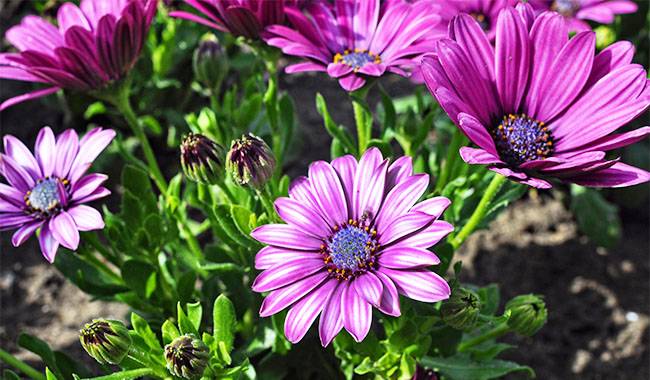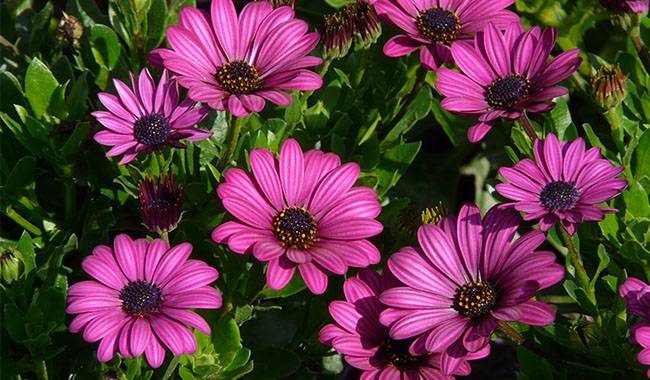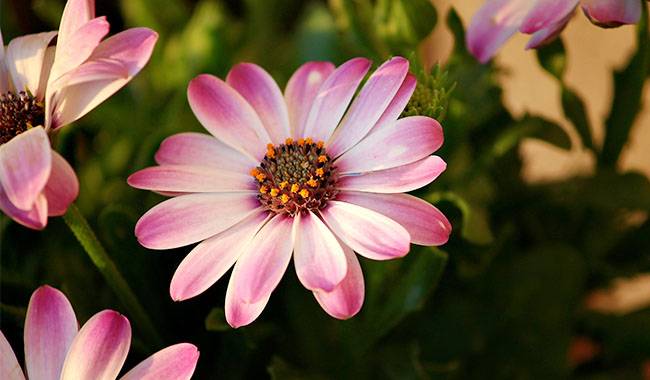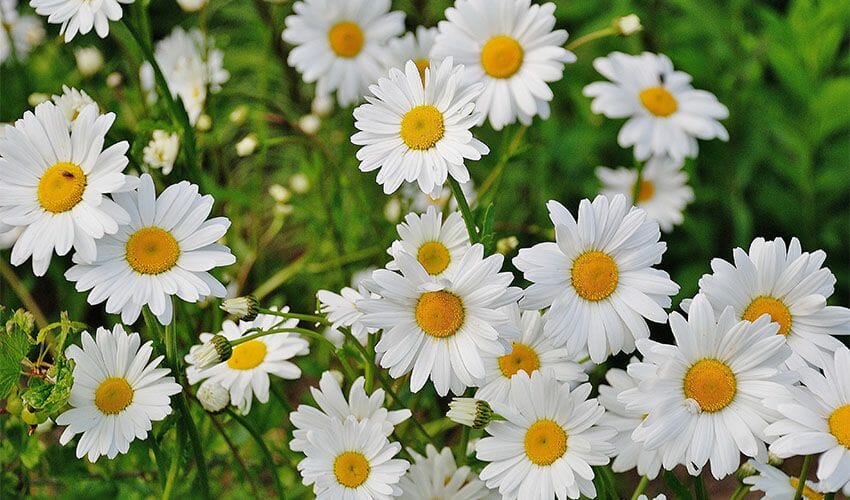
Osteospermum (Blue Eyed Daisies or African Daisies) is a very popular family of plants in European gardens. In appearance, this flower is similar in form to the daisy, but unlike the daisy, it comes in a variety of vibrant shades – from soft pink to deep purple, and even orange.
Americans are not yet familiar with this garden flower, but many have been able to appreciate its unpretentiousness and long, rich flowering period. So how to take cuttings from osteospermum?
Osteospermum is native to South Africa, the country from which this flower gets its second name. The flowers differ from American daisies not only in color but also in the type of petals and the height of the shrub. Some varieties of Osteospermum can grow up to 1 meter tall.
In Europe, this plant appeared in the 10th century. Of the 70 species of flowers available, only seven are popular today. osteospermum varieties are divided into different species depending on their color.
HOW TO GROW OSTEOSPERMUM
Osteospermum (Blue Eyed Daisies) can be grown in two ways: by sowing seeds and by taking cuttings.
OSTEOSPERMUM IN SEEDS
The flowers are sown at the beginning of March so that by the time they are planted, they will have mature shoots. The plants have large seeds, so it is recommended to plant them immediately in separate containers.
The soil is prepared as lightly and loosely as possible – this will accelerate the development of the plant. Ideally, mix sand, mulch, and leaf soil in equal parts. Seeds should be buried no more than 0.4inch (1cm). After sowing, pots should be placed in a warm, well-lit area as much as possible.
Tip: To get enough light and heat for germination of Osteospermum (Blue Eyed Daisies), put a UV lamp on top.
The seedlings will emerge in a week. In all the time before this, the soil should be slightly moist, but not wet, otherwise, the seeds will rot.
Sometimes Osteospermum (Blue Eyed Daisies) seeds are sown directly into the ground at the end of April. However, with this method of sowing, flowering will be much later. Another disadvantage is that about 30% of the seeds do not germinate after being sown in the ground.
CUTTINGS OF OSTEOSPERMUM
Cuttings are the method of propagating a certain variety of Osteospermum because this is the only way to obtain new specimens that exactly duplicate the color of the mother plant.
The process of taking cuttings is simple. The plan is to collect cuttings from the shrub, transplant them into pots in the fall and bring them into the apartment or residence. Cuttings from plants can be taken at any time, but in order to plant the specimen in the ground in the spring, the cutting blanks should be taken at the end of January.
Cut off the crown plugs with pruning shears, strip off the lower leaves and place them in a loose moist substrate. Example. A mixture of peat and a small amount of soil. You can use ready-made ground from the store. The stems are planted in a pot, covered with aluminum foil, and placed in a warm, bright place.
Important: On cloudy days, sprouts need to be lit by plant lights.
Remove the film as soon as new leaves begin to appear on the cuttings. During this time, seedlings should be placed periodically near an open window to harden for a few minutes. During the day when the weather is warm, take the plants to the balcony to avoid drafts.
OPEN-FIELD PLANTING OF OSTEOSPERMUM
Plants grown from seed or cuttings should be planted in the open ground in mid-May, after the end of night frosts and the onset of steady high temperatures. The plants should be at least 40inch (1 meter) apart.
The place of cultivation is suitable for both sun and shade. Is not required for such flowers and soil, but for larger decorative shrubs, it is necessary to prepare a fertile composition and make good drainage in the planting pit.
RULES FOR THE CARE OF OSTEOSPERMUM
Care of the plant includes watering, feeding, shaping the bush. It is also necessary to prevent the attack of pests and diseases.
How to water and feed
Water Osteospermum (Blue Eyed Daisies) regularly, but in moderation. Lack of water can be tolerated by the plant, but the soil should still be kept slightly moist for proper development. Do not over-water the flowers or the roots will begin to rot.
During bud formation and flowering, watering is combined with feeding. Fertilize the flowers with a mineral mixture and organic matter every 15-20 days, alternating the ingredients.
Pruning
Pruning of shoots is necessary to stimulate the growth of new stems. In this case, the bush becomes attractively and neatly shaped.
Important: It is also necessary to remove wilted flowers, which give the plant an untidy appearance.
Diseases and pests of Osteospermum and possible problems in cultivation.
The main enemy of Osteospermum (Blue Eyed Daisies) is excessive watering of the soil. Under such conditions, the root system will rot. Choosing the wrong location will have the same result. Planting in too shady a place can lead to root rot. The plant is resistant to other diseases.
Important: In particularly hot weather, the flowers can fall into a kind of “hibernation”. Budding stops and there is no flowering. It is mistakenly thought to be a disease. When cooler August arrives, Osteospermum (Blue Eyed Daisies) will continue to bloom.
Occasionally, Osteospermum can be attacked by aphids. Systemic insecticides should be used to control this pest.
OVERWINTERING ARRANGEMENTS
If Osteospermum (Blue Eyed Daisies) is grown in containers, bring it indoors and place it in a dark place. Its flowering period does not need to be extended, as the plant needs a dormant period. The room where the flowers overwinter should be cool, but not cold. The temperature should not fall below 59°F (15°C). The dormant period of the flower lasts until March. Then put in the light and water.
Osteospermum in the open ground will not overwinter even under mulch. Dig up the rhizomes and store them in a dry mixture of peat and sand until spring. If this is not done, the bush will die. As an alternative, it can be grown as an annual flower, sown annually, or prepared in copies from cuttings from the mother bush.
Thus, it is not difficult to grow a beautiful Osteospermum (Blue Eyed Daisies) in the garden. All you need to do is choose a suitable location and follow the recommended watering and fertilization rates.






